Cover
Table of Contents
Copyright
Credits
About the Author
Acknowledgments
About the Reviewers
www.PacktPub.com
Support files, eBooks, discount offers, and more
Why subscribe?
Free access for Packt account holders
Preface
What this book covers
What you need for this book
Who this book is for
Conventions
Reader feedback
Customer support
Downloading the color images of this book
Errata
Piracy
Questions
1. An Introduction to Lighting and Rendering
An introduction to the Unreal rendering system
Lighting paths
Using the Material and Cascade editors
The Material Editor
The Cascade editor
Working with light
Using light sources
Light Mobility status
The light settings
Light shapes
The Directional Light
Directional Light properties
The Point Light
Point Light properties
The Spot Light
Spot Light properties
The Sky Light
Sky Light properties
Summary
2. Understanding the Working of Materials
Understanding the Material Editor
Increasing the efficiency with the Material Editor
Dynamic material instances and material instances
Getting acquainted with the properties and inputs of the Material Editor
Properties
The Physical Material property
The Material
Translucency
Translucency Self Shadowing
Usage
Mobile
Tessellation
Post Process Material
Lightmass
Material Interface
Thumbnail
BaseMaterial inputs
Applying and using materials
The material nodes
The powerful layered material
A material network example
Summary
3. Cascade – a World Made of Particles
The Cascade editor
The toolbar
The Viewport panel
The Emitters panel
The Details panel
The Particle System
Thumbnail
LOD
Bounds
Delay
Macro UV
Occlusion
Materials
The particle emitter
The particle modules
The Curve Editor
The Toolbar
The Track List
The Graph
The interpolation modes
Adding, removing, and organizing curves
The different types of modules
Spawning Particle Systems
Applying the Particle System's optimizations
Summary
4. Precomputed Lights
Understanding lightmass
The Swarm agent
The Ambient Occlusion
The Ambient Occlusion settings
The Lightmass Settings option
The light shape settings
The materials settings
The brush settings
Building the lightmaps
The Indirect Lighting Cache
The Reflection Captures and the Reflection Environment
The Reflection Capture actors
The sphere shape
The box shape
Summary
5. Dynamic Lights Versus Performance
Movable Lights
Distance Field Ambient Occlusion
Setting it up
Limitations
Performance
Settings
The Sky Light
The primitive components
The Mesh Build settings
Debugging
The effects
Ray Traced Distance Field Soft Shadows
Limitations
Directional Lights
Point and Spot Lights
Performance
Settings
Light
Point and Spot Lights
Directional Lights
Summary
6. Post Processing Effects
The Post Process Project Settings
The Post Processing Volume
The properties
The available effects
White Balance
Color Grading
Film
Scene Color
Bloom
Light Propagation Volume
Ambient Cubemap
Auto Exposure
Lens Flares
Ambient Occlusion
Global Illumination
Depth of Field
Motion Blur
Screen Space Reflections
Creating a Lookup Table Texture (LUT)
Summary
7. Render Performance Debugging
The to-do list
Console show flags versus view modes and rendering visualizers
Understanding console show flags
The view modes and rendering visualizers
Console charts
The GPU Visualizer
Recommended
Summary
8. The Unreal Scalability Settings
The general rules
The render settings
The scalability options
The Engine Scalability Settings
The Material Quality Level
Device Profiles
Detail Mode
Console variables
Extending to a multiplayer split-screen
Summary
9. Adding Fog to Your Games
The fog types
The Atmospheric Fog
Adding it to your game
The Exponential Height Fog
Adding it to your game
The animated fog
The color
Animating the Exponential Height Fog
Summary
Index
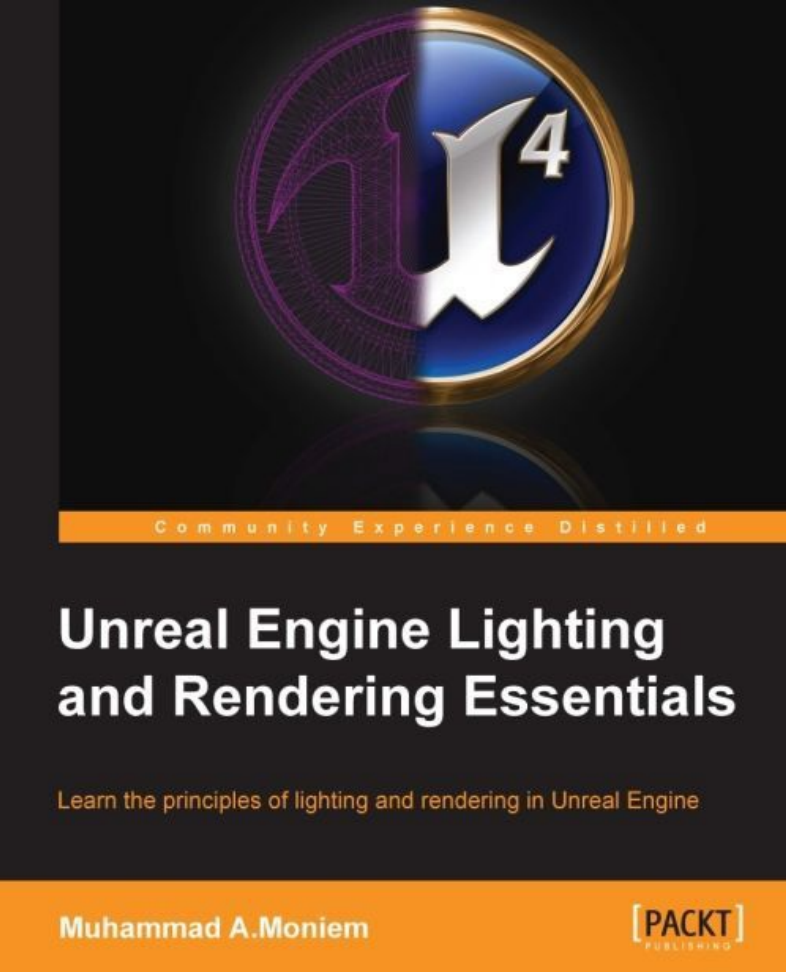
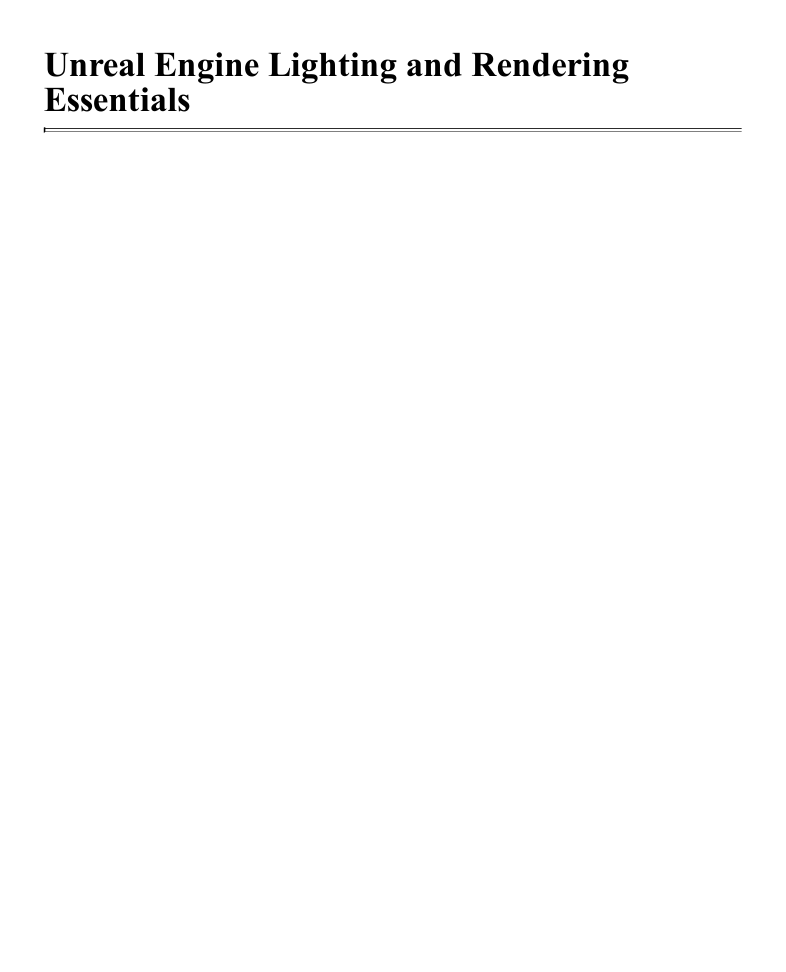
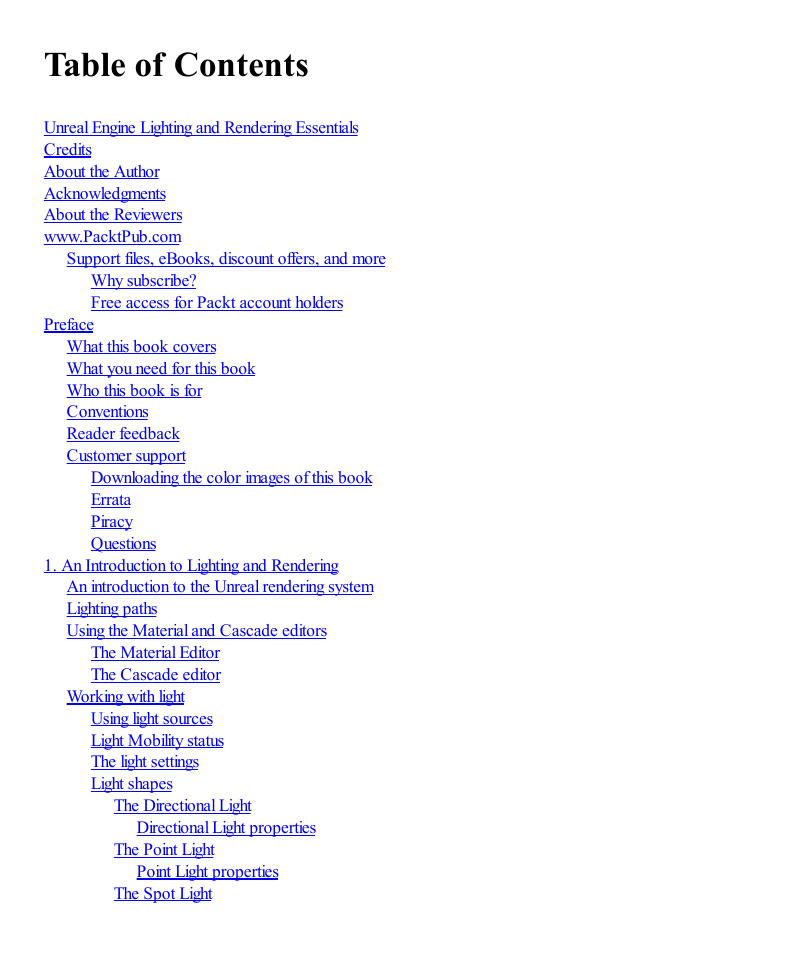
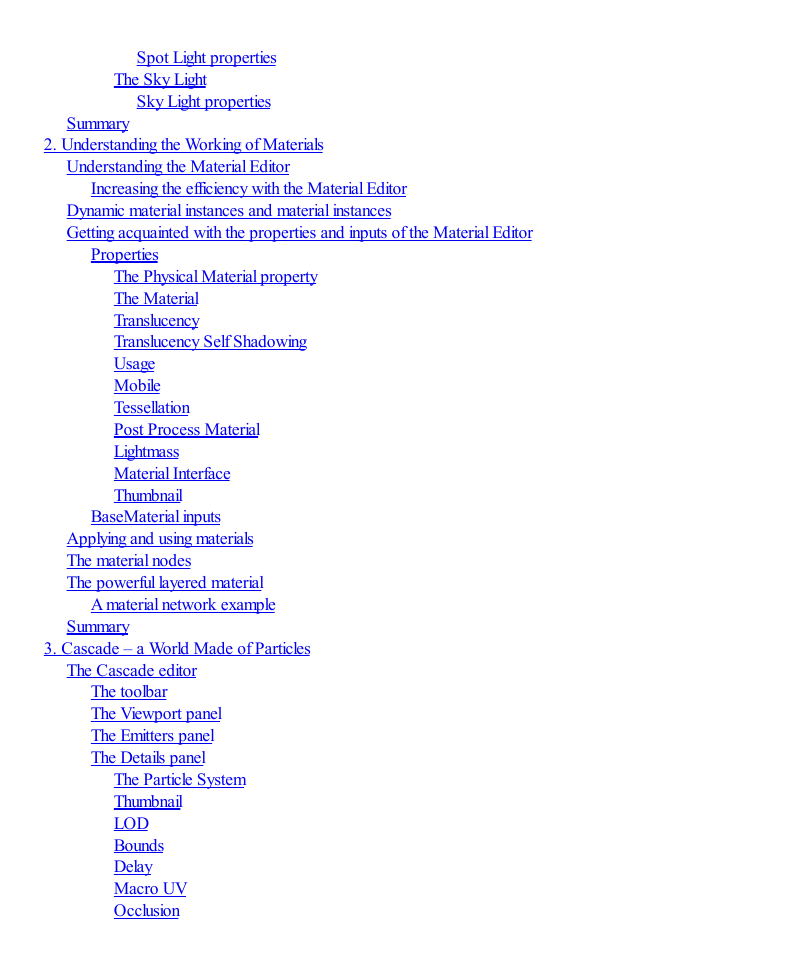
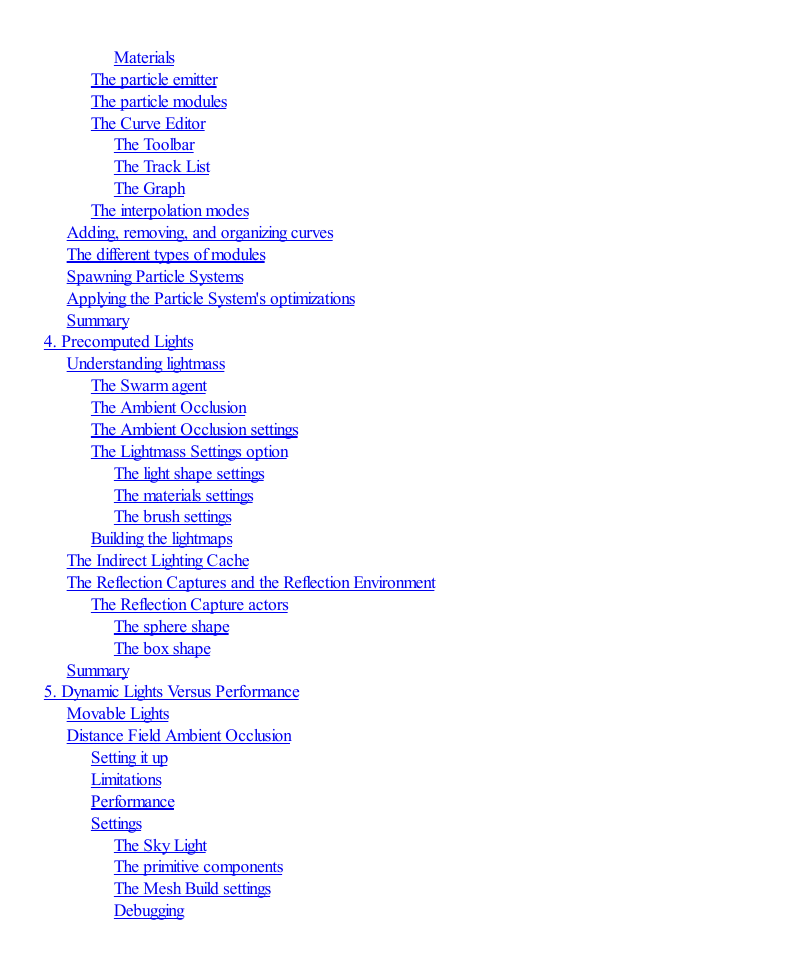

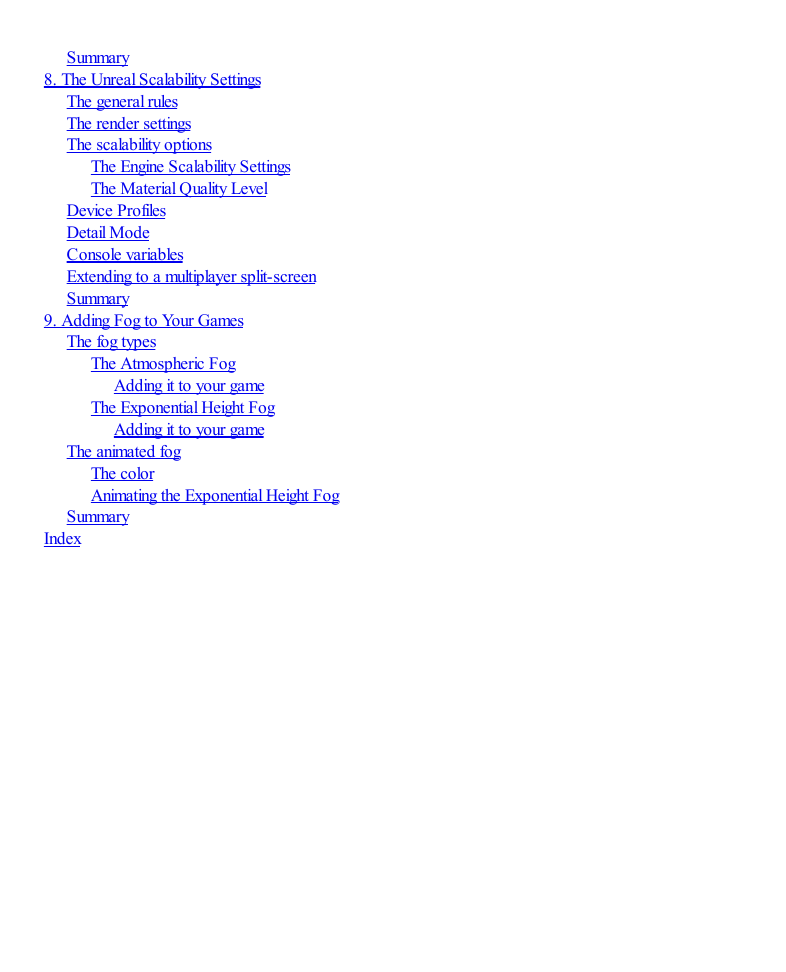
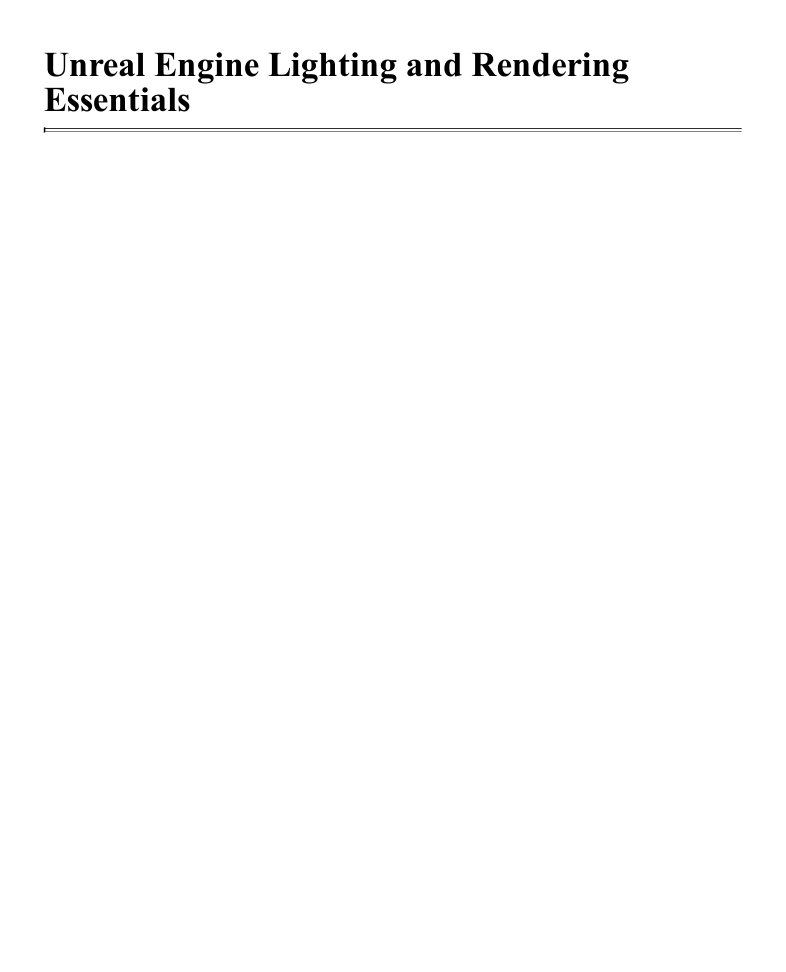








 2023年江西萍乡中考道德与法治真题及答案.doc
2023年江西萍乡中考道德与法治真题及答案.doc 2012年重庆南川中考生物真题及答案.doc
2012年重庆南川中考生物真题及答案.doc 2013年江西师范大学地理学综合及文艺理论基础考研真题.doc
2013年江西师范大学地理学综合及文艺理论基础考研真题.doc 2020年四川甘孜小升初语文真题及答案I卷.doc
2020年四川甘孜小升初语文真题及答案I卷.doc 2020年注册岩土工程师专业基础考试真题及答案.doc
2020年注册岩土工程师专业基础考试真题及答案.doc 2023-2024学年福建省厦门市九年级上学期数学月考试题及答案.doc
2023-2024学年福建省厦门市九年级上学期数学月考试题及答案.doc 2021-2022学年辽宁省沈阳市大东区九年级上学期语文期末试题及答案.doc
2021-2022学年辽宁省沈阳市大东区九年级上学期语文期末试题及答案.doc 2022-2023学年北京东城区初三第一学期物理期末试卷及答案.doc
2022-2023学年北京东城区初三第一学期物理期末试卷及答案.doc 2018上半年江西教师资格初中地理学科知识与教学能力真题及答案.doc
2018上半年江西教师资格初中地理学科知识与教学能力真题及答案.doc 2012年河北国家公务员申论考试真题及答案-省级.doc
2012年河北国家公务员申论考试真题及答案-省级.doc 2020-2021学年江苏省扬州市江都区邵樊片九年级上学期数学第一次质量检测试题及答案.doc
2020-2021学年江苏省扬州市江都区邵樊片九年级上学期数学第一次质量检测试题及答案.doc 2022下半年黑龙江教师资格证中学综合素质真题及答案.doc
2022下半年黑龙江教师资格证中学综合素质真题及答案.doc